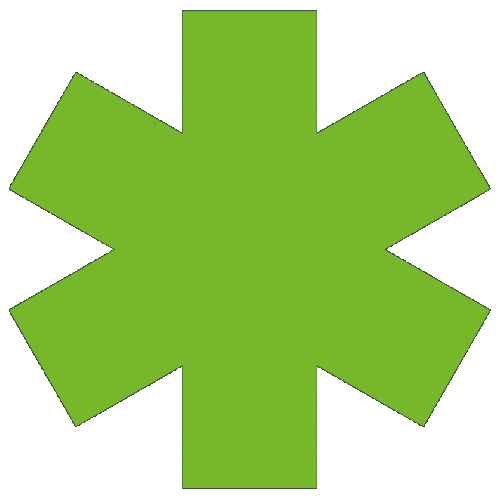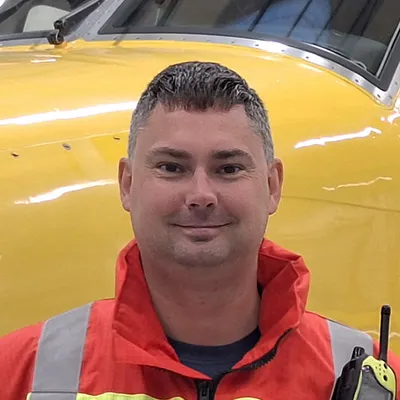Paramedic
Paramedics are independent, generalist clinicians who provide holistic, patient-centred care across diverse and unpredictable settings. They manage undifferentiated cases, including urgent and critically unwell or injured patients, using a range of clinical assessments, diagnostic tools, and interventional skills. Working in dynamic environments, paramedics make autonomous decisions while collaborating within multidisciplinary teams to navigate and implement appropriate management plans.
Beyond frontline care, paramedics play a vital role in leadership, research, and education, contributing to the profession’s development through mentorship, supervision, and evidence-based practice. Their work is underpinned by ethical reasoning, professional values, and the four pillars of paramedic practice, ensuring continuous learning and progression throughout their careers.
Case studies
Use the case studies below to learn more about the experiences of different individuals.
A person’s role may start to develop more formally into the other quadrants. Each person has a pie chart showing how much of the different quadrants is involved in their role.
Below is the colour code for each quadrant:
Education
Leadership & Management
Research & Development
Clinical Practice
Education
Leadership & Management
Research & Development
Clinical Practice
Abby Howcutt
85%
Aumir Masud
Motorsport Paramedic
Frankie Wright
Paramedic (Freelance)
Sharon Hagen
Paramedic and Aesthetic Practitioner
Wayne Thomson
Air Ambulance Paramedic
20%
20%
60%
Wayne Thomson
Job title: Air Ambulance Paramedic at Scottish Ambulance Service
Entry route: DipHE

What steps did you take in your professional journey to obtain your current position?
I Joined the Scottish Ambulance Service in November 2017 as a Student Technician, based at Stonehaven Ambulance Station. 18 months later, I qualified as a Technician working on frontline A and E vehicles as a relief staff member. In September 2020 I started my Dip HE studies through the Ambulance Service and Glasgow Caledonian University to become a Paramedic. This was a challenge as this was during lockdown and all education facilities were closed. We were used to see how higher education could be opened up safely. In October 2021 I qualified as a Paramedic and became registered with the HCPC. I continued in my role on frontline A and E vehicles going on to obtain my ALS qualification with the Resus Council and becoming an ILS instructor at the Univertisy of Aberdeen for the medical students. In March of 2023 I applied for and was successful in becoming a reservist on the fixed wing Air ambulance based at Dyce airport, Aberdeen and in October 2023 started a 5 year secondment to the air wing. In September 2023 I commenced by BSc Professional Practice (Paramedic Studies) through the University of Stirling.

What does your typical working week/day look like?
There is no typical day or week on the fixed wing. This service is government funded to provide a vital link to the islands and remote areas of Scotland to ensure there is equity in access to healthcare.
Our aircraft in Aberdeen mainly serves the Orkney and Shetland islands as well as Northern Scotland. We also provide cover to the western islands when the Glasgow aircraft is on other taskings. On top of providing a link to healthcare on the main land we provide a repatriation service to England and Ireland as well as transfer to specialised units in England for neonates, peadiatrics and organ transplant patients.
The role also involves assisting with the Scotstar retrieval teams Adult, Pediatric and Neonates in quickly transferring patients to enhanced care.

What is your favourite thing about your role?
The best part of my job is taking patients home after weeks in treatment on the mainland and seeing their gratitude when they see their homes.

What about your role is most challenging?
The hardest part of this role is transferring palliative patients but it also comes with the sense of pride that you are fulfilling their last request to go home to be with their families and surroundings they cherish the most.

What continuing professional development are you embarking on, or thinking about next?
I am considering doing my prescribing course. However being new to primary care and only just having qualified as a first contact practitioner, working only 1 day a week in practice I feel I need some more experience first before committing to the next stage.

What advice would you give to others aspiring to reach your position?
A love of aviation and patience is needed as plans are fluid and change last minute due to limited resource availability. Having at least 2 years post registration experience would be of great advantage along with doing a PHEC or ALS course to give you the confidence of working alone. Set backs are expected and use them as positives to learn from. Researching a role is vital for interviews to know what the job is your going into and to show potential new managers you are passionate in doing the role you want.

